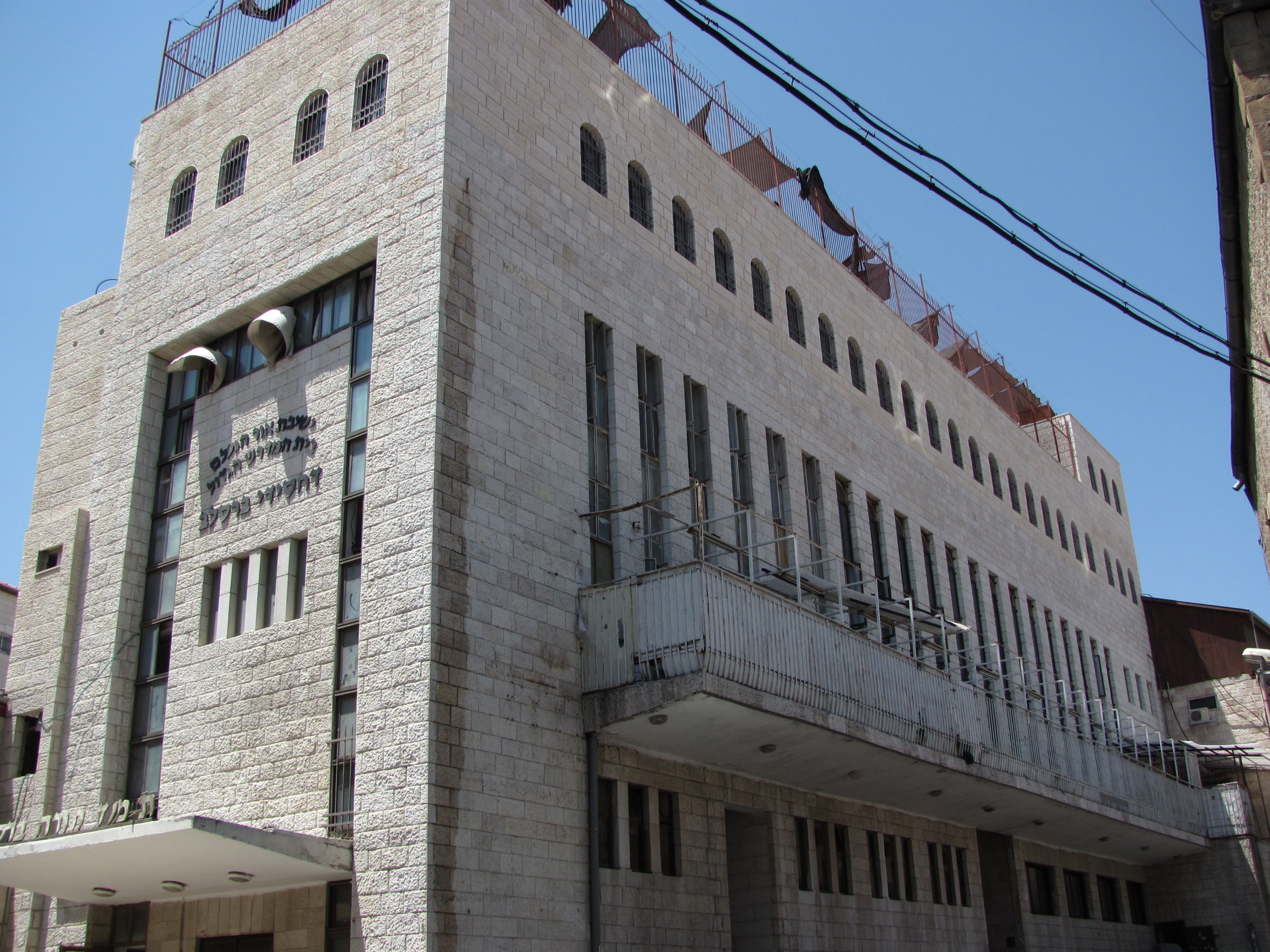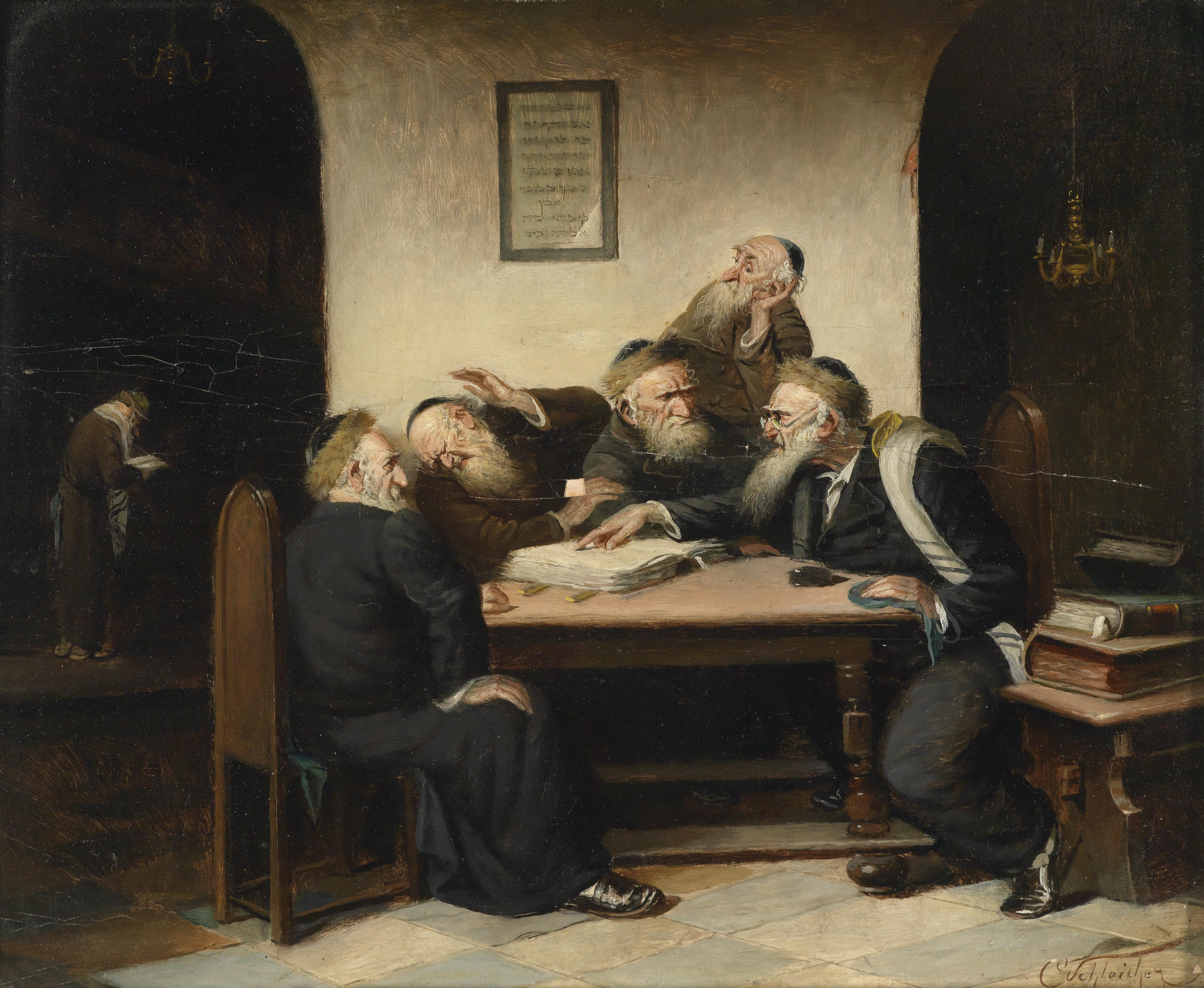|
Halacha Yomit
The Halacha Yomis Program (or ''Halacha Yomit'', as it is known in Israel) is a learning program which covers the entire Shulchan Aruch Orach Chaim followed by the Kitzur Shulchan Aruch. The cycle takes about 4 years to complete. Every day, Jewish participants study 3 se’ifim (subsections) of Shulchan Aruch or 5 se’ifim of Kitzur. Kitzur Shulchan Aruch is covered in addition to Shulchan Aruch Orach Chaim to include the generally applicable halachas not included in Orach Chaim. History The Halacha Yomis was started circa 1950 by Yonah Sztencl, under the guidance of many Orthodox Jewish leaders of the time, including Avrohom Yeshaya Karelitz. The Halacha Yomis and the Mishnah Yomis (also started at about the same time) were launched in the memory of the six million Jews that were murdered in the Holocaust The Holocaust (), known in Hebrew language, Hebrew as the (), was the genocide of History of the Jews in Europe, European Jews during World War II. Fr ... [...More Info...] [...Related Items...] OR: [Wikipedia] [Google] [Baidu] |
Shulchan Aruch
The ''Shulhan Arukh'' ( ),, often called "the Code of Jewish Law", is the most widely consulted of the various legal codes in Rabbinic Judaism. It was authored in the city of Safed in what is now Israel by Joseph Karo in 1563 and published in Venice two years later. Together with its commentaries, it is the most widely accepted compilation of halakha or Jewish law ever written. The halachic rulings in the ''Shulhan Arukh'' generally follow Sephardic law and customs, whereas Ashkenazi Jews generally follow the halachic rulings of Moses Isserles, whose glosses to the ''Shulhan Aruch'' note where the Sephardic and Ashkenazi customs differ. These glosses are widely referred to as the ''mappā'' "tablecloth" to the "Set Table". Almost all published editions of the ''Shulchan Aruch'' include this gloss, and the term has come to denote both Karo's work as well as Isserles', with Karo usually referred to as "the ''Meḥabbēr''" (, "Author") and Isserles as "the Rema" (a Hebrew acr ... [...More Info...] [...Related Items...] OR: [Wikipedia] [Google] [Baidu] |
Orach Chaim
''Orach Chayim'' ("manner/way of life") is a section of Rabbi Jacob ben Asher's compilation of Halakha (Jewish law), ''Arba'ah Turim''. This section addresses aspects of Jewish law pertinent to the Hebrew calendar (be it the daily, weekly, monthly, or annual calendar). Rabbi Yosef Karo modeled the framework of the '' Shulkhan Arukh'' (שולחן ערוך), his own compilation of practical Jewish law, after the ''Arba'ah Turim.'' Many later commentators used this framework, as well. Thus, ''Orach Chayim'' in common usage may refer to another area of halakha, separate from Rabbi Jacob ben Asher's compilation. ''Orach Chayim'' deals with but is not limited to: *Washing the hands in the morning *Tefillin *Tzitzit (ritual fringes) *Prayer *Sabbath *Festivals *Torah reading in synagogue. Commentaries on the ''Shulchan Aruch'' – ''Orach Chayim'' * ''Taz (Turei Zohov)'' – by Rabbi David HaLevi Segal * ''Magen Avraham'' – by Rabbi [ vraham Gombiner * ''Biur HaGra'' – by the V ... [...More Info...] [...Related Items...] OR: [Wikipedia] [Google] [Baidu] |
Shlomo Ganzfried
Shlomo Ganzfried (or ''Salomon ben Joseph Ganzfried'', , , ; 1804, in Ungvár, Com.Ung, Royal Hungary – 30 July 1886, in Ungvár, Ung, Royal Hungary) was an Orthodox rabbi and posek best known as the author of the work of Halakha (Jewish law), the ''Kitzur Shulchan Aruch'' (Hebrew: קיצור שולחן ערוך, "The Abbreviated Shulchan Aruch"), by which title he is also known. Biography Ganzfried was born in 1804 in Ungvár, in the Ung County of the Kingdom of Hungary (present-day Ukraine). His father Joseph died when he was eight. Ganzfried was considered to be a child prodigy and Ungvár's chief rabbi and Rosh yeshiva, Rabbi Zvi Hirsh Heller assumed legal guardianship; Heller was known as "''Hershele'' the Sharp-witted" for his piercing insights into the Talmud. Heller later moved to the city of Bonyhád, and Ganzfried, then fifteen, followed him. He remained in Heller's yeshiva for almost a decade until his ordination and marriage. After his marriage he work ... [...More Info...] [...Related Items...] OR: [Wikipedia] [Google] [Baidu] |
Yonah Sztencl
Yona Sztencl (, ; August 3, 1904 – July 5, 1969) was an Orthodox rabbi who founded the Mishnah Yomis and the Halacha Yomis. He also served as the rabbi of Congregation Bais Hassidim Arlenger in Tel Aviv and was a member of the Chief Rabbinate of Tel Aviv. Family background Sztencl was born in Sosnowiec, Poland on 3 August 1904 to Rabbi Shlomo and Miriam Baila Zweigenhaft. Sztencl was born into a rabbinical family. His father Shlomo was a Polish Orthodox Jewish rabbi who served as Chief Rabbi of Czeladź, Poland, and Rav, '' dayan'', and rosh yeshiva of Sosnowiec, Poland. He also authored ''Koheles Shlomo'' and ''Beis Shlomo''. Sztencl's mother Miriam was the daughter of Rabbi Efraim Mordechai Mottel Zweigenhaft who served as a Posek and Shochet in Sosnowiec.Chidushei Hagaon M'sosnovitz Biography In his youth Sztencl studied in Kraków, Poland. His study partner, Moshe Mordechai Biderman would later become Grand Rabbi of the Lelov dynasty. Thereafter, Sztencel was one of th ... [...More Info...] [...Related Items...] OR: [Wikipedia] [Google] [Baidu] |
Avrohom Yeshaya Karelitz
Avraham Yeshayahu Karelitz (; 7 November 1878 – 24 October 1953), also known as the Chazon Ish () after his magnum opus, was a Belarusian-born Orthodox rabbi who later became one of the leaders of Haredi Judaism in Israel, where he spent his final 20 years, from 1933 to 1953. Biography Avraham Yeshayahu Karelitz was born in Kosava, in the Grodno Governorate of the Russian Empire (now Brest Region, Belarus), the son of Shmaryahu Yosef Karelitz, the rabbi of Kosava; his mother was Rasha Leah, the daughter of Shaul Katzenelbogen.Shdeour, E. "Harav Yitzchak Karelitz of Kosova, ''Hy"d''". ''Hamodia'', 12 January 2012, p. C2. Avraham Yeshaya was born after his older brother Meir. His younger brothers were Yitzchak and Moshe. Yitzchak succeeded their father as the rabbi of Kosava; he and his wife and daughter were shot to death in their home by the Germans in mid-1942. His oldest sisters were Henya Chaya, Badana, Tzivia and Batya. Karelitz's youngest sister, Pesha Miriam (Miri ... [...More Info...] [...Related Items...] OR: [Wikipedia] [Google] [Baidu] |
Mishnah Yomis
In Judaism, Mishnah Yomis or Mishnah Yomit ( "The Daily Study of the Mishnah") refers to the Torah study cycle in which two Mishnahs (brief collections of discussions and rulings dealing with the Oral Torah) are learned every day. It takes about 6 years to study all six tractates of the Mishnah using this learning cycle. Previous cycles of the Mishnah Yomis began on 22 Tamuz 5770 (July 4, 2010), and 20 Adar-B 5776 (March 30, 2016). The current cycle began on Shabbat, 21 Tevet 5782 (December 25, 2021). History The Mishna Yomis learning cycle was first established in 1948 by Rabbi Yonah Sztencl. His goal in creating the Mishnah Yomis cycle was to memorialize the Jews that were killed in the Holocaust, through a global studying of the Mishnah. He also wanted to provide a realistic way for even a simple, working Jew to familiarize himself with the six orders of the Mishnah, upon which the Jewish system of law is based. In just 6 years, anyone can learn the entire set of 4,192 Mishnah ... [...More Info...] [...Related Items...] OR: [Wikipedia] [Google] [Baidu] |
The Holocaust
The Holocaust (), known in Hebrew language, Hebrew as the (), was the genocide of History of the Jews in Europe, European Jews during World War II. From 1941 to 1945, Nazi Germany and Collaboration with Nazi Germany and Fascist Italy, its collaborators systematically murdered some six million Jews across German-occupied Europe, around two-thirds of Europe's Jewish population. The murders were carried out primarily through mass shootings and poison gas in extermination camps, chiefly Auschwitz concentration camp#Auschwitz II-Birkenau, Auschwitz-Birkenau, Treblinka extermination camp, Treblinka, Belzec extermination camp, Belzec, Sobibor extermination camp, Sobibor, and Chełmno extermination camp, Chełmno in Occupation of Poland (1939–1945), occupied Poland. Separate Nazi persecutions killed a similar or larger number of non-Jewish civilians and prisoners of war (POWs); the term ''Holocaust'' is sometimes used to include the murder and persecution of Victims of Nazi ... [...More Info...] [...Related Items...] OR: [Wikipedia] [Google] [Baidu] |
Breslov (Hasidic Group)
Breslov (also Bratslav and Breslev) is a branch of Hasidic Judaism founded by Nachman of Breslov (1772–1810), a great-grandson of the Baal Shem Tov, founder of Hasidism. Its adherents strive to develop an intense, joyous relationship with God and receive guidance toward this goal from the teachings of Nachman. The movement has had no central, living leader for the past 200 years, as Nachman did not designate a successor. As such, Breslov adherents are sometimes referred to as the "dead Hasidim" () since they have never had a formal Rebbe since Nachman's death. However, certain groups and communities under the Breslov banner refer to their leaders as "Rebbe". The movement weathered strong opposition from virtually all other Hasidic movements in Ukraine throughout the 19th century, yet, at the same time, experienced growth in numbers of followers from Ukraine, Belarus, Lithuania, and Poland. By World War I, thousands of Breslov Hasidim lived in the region. After the Bolshevi ... [...More Info...] [...Related Items...] OR: [Wikipedia] [Google] [Baidu] |
Torah Study
Torah study is the study of the Torah, Hebrew Bible, Talmud, responsa, rabbinic literature, and similar works, all of which are Judaism's religious texts. According to Rabbinic Judaism, the study is done for the purpose of the ''mitzvah'' ("commandment") of Torah study itself. This practice is present to an extent in all religious branches of Judaism, and is considered of paramount importance among religious Jews. Torah study has evolved over the generations, as lifestyles changed and also as new texts were written. Traditional view In rabbinic literature, a heavy emphasis is placed on Torah study for Jewish males, with women being exempt. This literature teaches an eagerness for such study and a thirst for knowledge that expands beyond the text of the Tanakh to the entire Oral Torah. Some examples of traditional religious teachings: * The study of Torah is "equal to all" of the ''mitzvot'' of honouring one's parents, performing deeds of lovingkindness, and bringing peace be ... [...More Info...] [...Related Items...] OR: [Wikipedia] [Google] [Baidu] |
Jewish Law
''Halakha'' ( ; , ), also transliterated as ''halacha'', ''halakhah'', and ''halocho'' ( ), is the collective body of Jewish religious laws that are derived from the Written and Oral Torah. ''Halakha'' is based on biblical commandments ('' mitzvot''), subsequent Talmudic and rabbinic laws, and the customs and traditions which were compiled in the many books such as the ''Shulchan Aruch'' or ''Mishneh Torah''. ''Halakha'' is often translated as "Jewish law", although a more literal translation might be "the way to behave" or "the way of walking". The word is derived from the root, which means "to behave" (also "to go" or "to walk"). ''Halakha'' not only guides religious practices and beliefs; it also guides numerous aspects of day-to-day life. Historically, widespread observance of the laws of the Torah is first in evidence beginning in the second century BCE, and some say that the first evidence was even earlier. In the Jewish diaspora, ''halakha'' served many Jewish communit ... [...More Info...] [...Related Items...] OR: [Wikipedia] [Google] [Baidu] |



